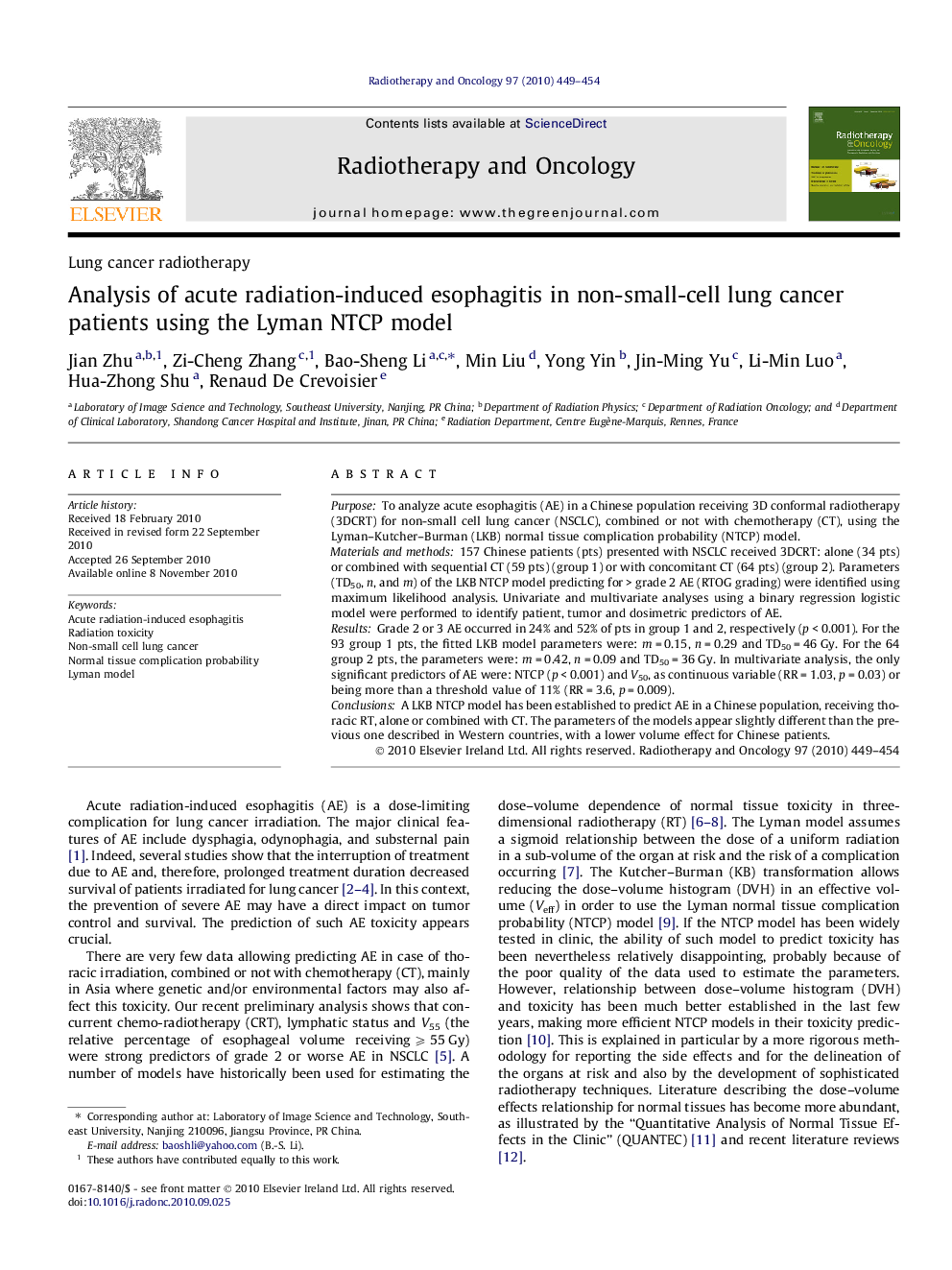| Article ID | Journal | Published Year | Pages | File Type |
|---|---|---|---|---|
| 2159197 | Radiotherapy and Oncology | 2010 | 6 Pages |
PurposeTo analyze acute esophagitis (AE) in a Chinese population receiving 3D conformal radiotherapy (3DCRT) for non-small cell lung cancer (NSCLC), combined or not with chemotherapy (CT), using the Lyman–Kutcher–Burman (LKB) normal tissue complication probability (NTCP) model.Materials and methods157 Chinese patients (pts) presented with NSCLC received 3DCRT: alone (34 pts) or combined with sequential CT (59 pts) (group 1) or with concomitant CT (64 pts) (group 2). Parameters (TD50, n, and m) of the LKB NTCP model predicting for > grade 2 AE (RTOG grading) were identified using maximum likelihood analysis. Univariate and multivariate analyses using a binary regression logistic model were performed to identify patient, tumor and dosimetric predictors of AE.ResultsGrade 2 or 3 AE occurred in 24% and 52% of pts in group 1 and 2, respectively (p < 0.001). For the 93 group 1 pts, the fitted LKB model parameters were: m = 0.15, n = 0.29 and TD50 = 46 Gy. For the 64 group 2 pts, the parameters were: m = 0.42, n = 0.09 and TD50 = 36 Gy. In multivariate analysis, the only significant predictors of AE were: NTCP (p < 0.001) and V50, as continuous variable (RR = 1.03, p = 0.03) or being more than a threshold value of 11% (RR = 3.6, p = 0.009).ConclusionsA LKB NTCP model has been established to predict AE in a Chinese population, receiving thoracic RT, alone or combined with CT. The parameters of the models appear slightly different than the previous one described in Western countries, with a lower volume effect for Chinese patients.
